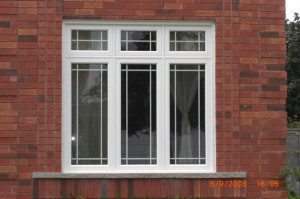The freezing temperatures and snow that is associated with Toronto winters are already upon us and if you’ve not done so already you would be well advised to take certain measures to protect your home from the cold. One of the best money-saving steps you can take this year is to winterize your vinyl windows. Why? Well, during the winter period we use our home heating systems just about every single day, but if the heat that this system produces is allowed to escape, your home heating has to work doubly hard to heat the interior of your home. And where does heat typically escape from the average home? You guessed it; through the windows!
Steps You Can Take to Winterize Vinyl Windows
The amount of work required to fully winterize windows will largely depend on the type, condition and material that the window frames are made from. For example, if you have an old set of wooden windows that were installed at your home over 30 years ago, the work required to protect them from wintery conditions will be far more extensive than if your house is fitted with relatively new vinyl windows. Here are a few steps to follow:
- Carry Out a Thorough Assessment – The first thing to do (and this is something that you should really do periodically throughout the year) is to carry out a thorough assessment of the condition of your windows, both inside and outside. You need to pay careful attention and look for any cracks, chips or dents in the frames of your vinyl windows, as these are issues that could potentially lead to air leakage.
- Apply Caulk Where Necessary – If you do happen to notice any damage to the frames, one solution is to apply caulk, which will fill cracks and chips and allow your windows to do a better job at insulating your property. You may come across old “battle scars” if your vinyl windows are of a certain age and rather than ignoring these, it’s important to check on the condition of the caulk and replace if necessary. Always apply caulk on a dry day and wipe away any excess. It’s also a good idea to remove the old caulk that lies around the perimeter of the windows on the exterior side and apply a fresh bed; just make sure the caulk you use is weatherproof!
- Weather strip the Interior – After you’ve finished with the caulk, weather stripping is the next step. This can be applied to the interior of both windows and doors and can further reduce the loss of warm air. This should be applied around the sash area of the windows, as this where air loss is most likely to take place. There are many different types of weather stripping that you could use, but some of the most common include adhesive-backed foam, spring v-seal, felt and tubular rubber-gasket weather stripping.
If you require further advice on how to winterize your vinyl windows or require our help for either repair work or a vinyl window replacement in Toronto, Markham, Richmond Hill or Durham, please get in touch with our team today.

 If you’ve never been through the process of a vinyl window replacement project before, it can be difficult to know which way to turn. You are faced with many different choices and with no experience, you are more prone to making mistakes. The trouble is, mistakes with a
If you’ve never been through the process of a vinyl window replacement project before, it can be difficult to know which way to turn. You are faced with many different choices and with no experience, you are more prone to making mistakes. The trouble is, mistakes with a